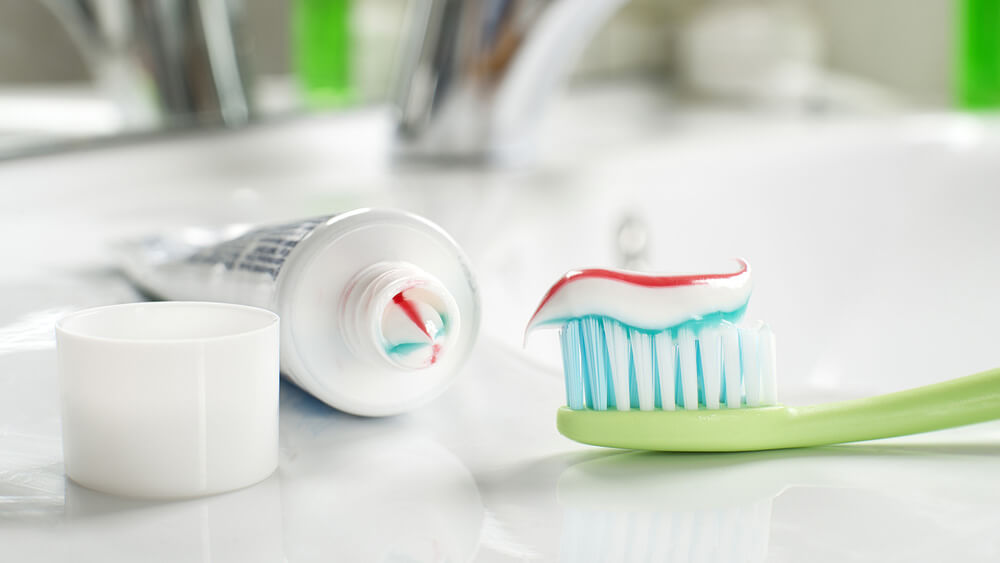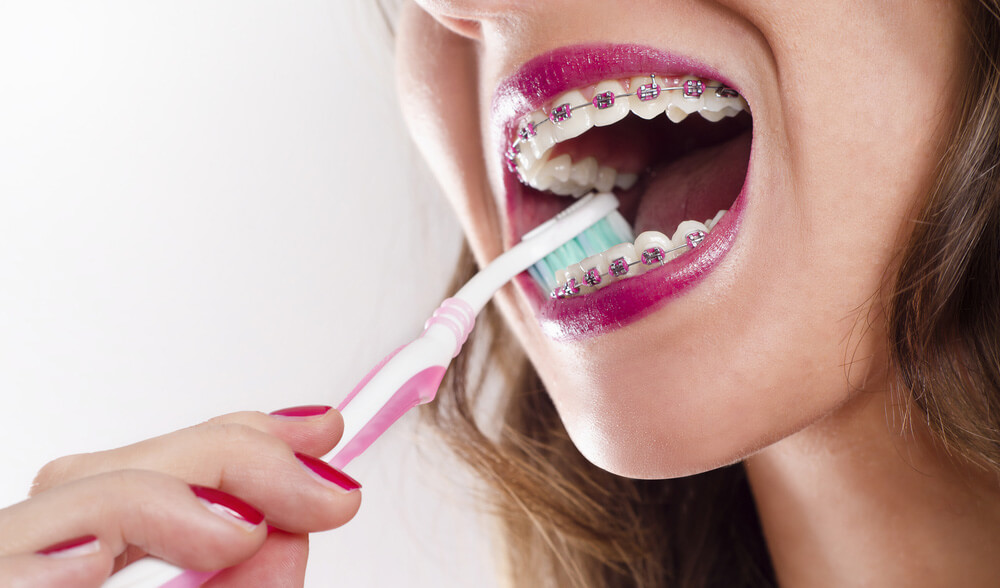
Are you feeling overwhelmed by the dizzying number of options in the toothpaste aisle? Hey, Dr. Sharma is a Surrey orthodontist with serious teeth expertise and even he admits that differentiating between the different types of toothpaste can take some work. Undergoing orthodontic treatment makes the choice even more daunting and patients at Aura Orthodontics frequently ask what the best toothpaste for braces is. To help demystify it, we’ve compiled the ultimate toothpaste buying guide to keep your mouth healthy and happy.
Some Toothpaste Background
Toothpaste, officially known as dentifrice, is an important part of your tooth cleaning routine. Found in gel, paste and powder form, the product helps to amp up your toothbrush’s cleaning abilities and remove plaque. However, the mechanical action of brushing your chompers is way more crucial than the type of toothpaste you use as long as your paste contains fluoride. In fact, a good chunk of the toothpaste features are really just marketing gimmicks and the formulas don’t make your mouth any healthier than a regular old fluoride variety does. There are some exceptions, which we’ll get into. Just be sure your toothpaste is approved by the American or Canadian Dental Association (CDA). While a CDA seal of approval isn’t a requirement for toothpaste makers, those that are stamped with it have given the CDA data that shows their toothpaste is beneficial to consumers’ oral health.
Types of Toothpaste and Ingredients to Look for
Like we said, fluoride is the most important ingredient in toothpaste and it’s a must even if your water has fluoride in it. While there are some conspiracy theories about it being dangerous, it’s perfectly safe in small amounts and adding it to water sources dramatically decreases the incidences of tooth decay in communities. Fluoride is a natural mineral that hardens the enamel. Additionally, it helps in the demineralization and remineralization processes that occur in our mouths. Acids in the saliva attack the mineral layers in the teeth (demineralization) and if remineralization, which is when minerals are redeposited, doesn’t occur, cavities form. Fluoride helps protect the teeth from the acids and also hastens remineralization and makes it more effective. Any toothpaste with fluoride will do for most people as long as they’re brushing, flossing and visiting a dentist regularly as well as eating a healthy diet.
Thinking About Getting Braces in Surrey? Book a Free Consultation
That’s not to say there aren’t other toothpastes that could work for you, particularly if you have a specific issue like sensitive teeth. Formulations that could be beneficial depending on your needs include:
- Anti-Cavity Toothpastes – These toothpastes fight cavities with the aforementioned fluoride, however, some contain higher levels of the mineral than your standard pastes. If you don’t have fluoride in your water, you may want to give an anti-cavity toothpaste a try or talk to your dentist about prescription toothpaste.
- Whitening Toothpastes – Most whitening toothpastes contain abrasive ingredients like magnesium carbonate or dehydrated silica gels that will remove surface stains. This could be a good choice if you drink a lot of coffee or have mild staining. Keep in mind that these formulas don’t typically contain the peroxide found in whitening strips or in-office teeth whitening treatments and if they do, it’s in much lower concentrations. Therefore, you won’t get the same results as you would with a professional whitening treatment. You should be wary of whitening toothpaste if you have sensitive teeth, irritable bowel syndrome or you wear braces.
- Sensitive Teeth Toothpaste – The best type of toothpaste for sensitive teeth will contain potassium nitrate or strontium chloride. These ingredients block pain signals to the tooth’s nerves that are brought on by things like cold or sweets. If you have sensitive teeth, it’s a worthwhile investment. While some brands have ten different kinds of sensitive teeth toothpastes, they all contain the same ingredients and work in a nearly identical fashion. Go with the one that tastes the best.
- All-Natural Toothpaste – Natural toothpaste formulated without artificial ingredients and foaming agents like sodium lauryl sulfate, can be an excellent option but a lot of natural brands don’t use fluoride. This can be a benefit for babies and toddlers who tend to swallow toothpaste but if you’re trying to avoid cavities and you’re old enough to know how to spit when brushing, be sure fluoride is included.
- Antibacterial Toothpastes – You may have seen the ingredient triclosan in a variety of toothpastes and both the CDA and ADA hold the position that it can reduce gum inflammation by killing bacteria, which helps to prevent gingivitis. It’s also good for eliminating bad breath. However, there is some debate about its safety and efficacy so it’s best to weigh the risks versus the benefits to make an informed choice.
- Tartar Control Toothpastes – If you’re brushing correctly with a fluoride toothpaste, chances are you don’t need anything that claims to have extra tartar control properties. However, the American Dental Association does suggest that pyrophosphates, triclosan and zinc citrate can reduce tarter, which is hardened plaque, a little more effectively than run of the mill formulas.
What Toothpaste to Use With Braces

If you’re straightening your teeth with Invisalign, your oral hygiene routine will stay the same. If you have braces, you’ll have to work a little harder to maintain clean, cavity-free teeth. At Aura Orthodontics, we recommend any fluoride toothpaste with the CDA seal of approval. Choose one that tastes delicious so that you’ll want to brush and be sure to follow the brushing and flossing techniques recommended by Dr. Sharma. If you experience sensitivity, a toothpaste for sensitive teeth might be a good bet for you and could make your braces-wearing experience a more comfortable one.
We do typically advise our patients to stay away from whitening toothpaste while they’re rocking their braces. It will only whiten the visible areas of the teeth and not the parts hidden by the brackets, which could lead to an uneven color when your braces come off. Additionally, it can make teeth more sensitive and that’s not something you want when undergoing orthodontic treatment.
Whether it’s offering toothpaste recommendations or demonstrating how to use a floss threader, Dr. Sharma pulls out all of the stops to ensure his Surrey and Abbotsford braces and Invisalign patients feel confident in maintaining good oral hygiene throughout their treatment. If you have a question, we’re always happy to answer it at Aura Orthodontics. Feel free to give us a call or ask at your next appointment. Not a patient? Schedule a free consultation and learn about your options for achieving a smile you love.





